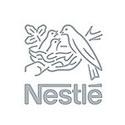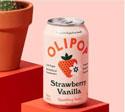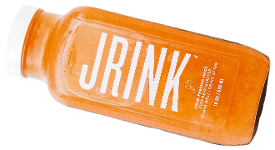Coca-Cola
Innovators At Coca-Cola Plan For Industry, Societal Change
 In a recent interview, Matt Hughes, Coca-Cola’s vice president for incubation and a founding member of its Venturing and Emerging Brands unit, pointed to “beverages for life,” water usage, women empowerment, and environmental sustainability as top priorities of the company’s “mission approach to things.” As to specific product areas, Hughes said “plant-based is an interesting space … that is an adjacent area to dairy from a protein perspective.” As it thinks about the future and “where consumers are going to be five or 10 years from now,” Coca-Cola invests time, energy and money to gain expertise in new technologies, marketing and digital platforms, and other areas that can help drive growth. Hughes said he expects Coca-Cola to be as “on-trend” 30 years from now as it is today, and he is very enthusiastic about the prospects for sparkling water Topo Chico and sports hydration beverage Body Armor.[Image Credit: © THE COCA-COLA COMPANY]
In a recent interview, Matt Hughes, Coca-Cola’s vice president for incubation and a founding member of its Venturing and Emerging Brands unit, pointed to “beverages for life,” water usage, women empowerment, and environmental sustainability as top priorities of the company’s “mission approach to things.” As to specific product areas, Hughes said “plant-based is an interesting space … that is an adjacent area to dairy from a protein perspective.” As it thinks about the future and “where consumers are going to be five or 10 years from now,” Coca-Cola invests time, energy and money to gain expertise in new technologies, marketing and digital platforms, and other areas that can help drive growth. Hughes said he expects Coca-Cola to be as “on-trend” 30 years from now as it is today, and he is very enthusiastic about the prospects for sparkling water Topo Chico and sports hydration beverage Body Armor.[Image Credit: © THE COCA-COLA COMPANY]
Coke Korea Names First Woman As CEO
 Coca-Cola Korea has named its first female CEO to replace 12-year-veteran Lee Chang-yeob. Choi Su-chong, who is said to have “a proven record of growing businesses and managing large transitions,” will be responsible for managing operations as well as building a brand through competitive differentiation. Choi joined Coca-Cola Korea as a brand manager for Sprite and Fanta in 2006 and was promoted to various positions in marketing soda brands. Most recently she was responsible for the launch of new products such as Seagrams, Georgia Coffee, Toreta, and AdeS.[Image Credit: © THE COCA-COLA COMPANY]
Coca-Cola Korea has named its first female CEO to replace 12-year-veteran Lee Chang-yeob. Choi Su-chong, who is said to have “a proven record of growing businesses and managing large transitions,” will be responsible for managing operations as well as building a brand through competitive differentiation. Choi joined Coca-Cola Korea as a brand manager for Sprite and Fanta in 2006 and was promoted to various positions in marketing soda brands. Most recently she was responsible for the launch of new products such as Seagrams, Georgia Coffee, Toreta, and AdeS.[Image Credit: © THE COCA-COLA COMPANY]
Coca-Cola India Is The Innovation Spark Plug Driving Asia-Pacific Region Growth
 The Asia-Pacific region is a key growth engine for Coca-Cola, but innovation in India is sparking that engine. Coca-Cola India is perceived as “agile and swift when it comes to introducing innovations:” product innovations in India have almost doubled over the last three years.” In a recent interview, Shell Huang, vice-president for R&D, Asia-Pacific, noted that Coca-Cola India has launched nearly 25 new products since 2016, applying an incubation model that cuts development time from the concept stage to the retail shelves to 12 weeks from 2-3 years. Collaborating with the Shanghai R&D Center, Coca-Cola India is currently testing products such as spiced buttermilk fortified with fiber to strengthen its dairy play, a fruit puree product under the Minute Maid brand, and a non-alcoholic malt drink under the Barbican brand. The spiced buttermilk product is likely to be launched nationally in the first quarter of 2020, while the fruit puree product will be launched in select urban markets, Huang said. [Image Credit: © The Coca-Cola Company]
The Asia-Pacific region is a key growth engine for Coca-Cola, but innovation in India is sparking that engine. Coca-Cola India is perceived as “agile and swift when it comes to introducing innovations:” product innovations in India have almost doubled over the last three years.” In a recent interview, Shell Huang, vice-president for R&D, Asia-Pacific, noted that Coca-Cola India has launched nearly 25 new products since 2016, applying an incubation model that cuts development time from the concept stage to the retail shelves to 12 weeks from 2-3 years. Collaborating with the Shanghai R&D Center, Coca-Cola India is currently testing products such as spiced buttermilk fortified with fiber to strengthen its dairy play, a fruit puree product under the Minute Maid brand, and a non-alcoholic malt drink under the Barbican brand. The spiced buttermilk product is likely to be launched nationally in the first quarter of 2020, while the fruit puree product will be launched in select urban markets, Huang said. [Image Credit: © The Coca-Cola Company]
Improved Packaging Sustainability Is A Major Priority Of CCEP
 According to Joe Franses, VP Sustainability for Coca-Cola European Partners (CCEP), a major priority for the company is reducing the environmental impact of its packaging. It is working on a number of initiatives to improve the packaging sustainability, including removing unnecessary plastic and developing innovative ways to get its products to consumers. In a recent interview, Franses said the company wants to make sure all packaging is 100 percent recyclable, but the most challenging goal is to “collect a bottle or can for everyone that we sell.” To achieve these goals Franses said the company is implementing a cross-system working model with Coca-Cola to ensure packaging sustainability. This includes: investing in new manufacturing lines at sites across Europe; increasing capacity for refillable glass bottles and resting new routes to market; and – to encourage use of refillable packaging – looking closely at the different collection and recycling schemes in place in Western Europe – including household collection schemes and deposit return schemes (DRS). [Image Credit: © The Coca-Cola Company]
According to Joe Franses, VP Sustainability for Coca-Cola European Partners (CCEP), a major priority for the company is reducing the environmental impact of its packaging. It is working on a number of initiatives to improve the packaging sustainability, including removing unnecessary plastic and developing innovative ways to get its products to consumers. In a recent interview, Franses said the company wants to make sure all packaging is 100 percent recyclable, but the most challenging goal is to “collect a bottle or can for everyone that we sell.” To achieve these goals Franses said the company is implementing a cross-system working model with Coca-Cola to ensure packaging sustainability. This includes: investing in new manufacturing lines at sites across Europe; increasing capacity for refillable glass bottles and resting new routes to market; and – to encourage use of refillable packaging – looking closely at the different collection and recycling schemes in place in Western Europe – including household collection schemes and deposit return schemes (DRS). [Image Credit: © The Coca-Cola Company]
CCEP Hopes To Lure Younger Consumers To Diet Coke With Snazzy New Cans
 The Diet Coke brand marketed by Coca-Cola European Partners is getting a temporary makeover. Each 330 ml can features phrases that “people love to use to express themselves, at least in the U.K. The limited-edition cans will be festooned with terms like “It’s lit”, “I’m in”, “Yaasss”, “Okay, but no”, “Get it”, or “Can’t even.” CCEP says the new can designs are “stand out on shelf and drive talkability among young adults while helping to recruit new consumers into the Diet Coke brand.”[Image Credit: © The Coca-Cola Company]
The Diet Coke brand marketed by Coca-Cola European Partners is getting a temporary makeover. Each 330 ml can features phrases that “people love to use to express themselves, at least in the U.K. The limited-edition cans will be festooned with terms like “It’s lit”, “I’m in”, “Yaasss”, “Okay, but no”, “Get it”, or “Can’t even.” CCEP says the new can designs are “stand out on shelf and drive talkability among young adults while helping to recruit new consumers into the Diet Coke brand.”[Image Credit: © The Coca-Cola Company]
Nestle
Nestlé Brasil Signs Production, Distribution Agreement For Two UHT Milk Brands

Nestlé Brasil announced it is licensing its Ninho and Molico brands exclusively for the production and distribution of UHT milk in Brazil to Laticínios Bela Vista, owner of the Piracanjuba and LeitBom brands, for ten years. The partnership’s goal is to accelerate the expansion of the UHT milk market in Brazil and boost the position of the Ninho and Molico brands. Laticínio Bela Vista will take over some Nestlé units in Brazil that produce UHT milk, using the lines that are already installed and absorbing most of the employees at facilities in Três Rios and Araraquara, and part of the factory in Carazinho.[Image Credit: © Nestle]
Other Companies
New Branched-Chain Amino Acids Drinks From Celsius
 Florida-based functional drinks maker Celsius Holdings Inc., announced expansion of its product portfolio to include branched-chain amino acids (BCAA) drinks that purportedly fuel muscle recovery. The new products, launched in three flavors: blood orange lemonade, tart cherry lime and tropical twist – will be introduced initially into the fitness channel. The company says the new BCAA extension is the first post-workout, recovery beverage that Celsius has introduced in the U.S.[Image Credit: © Celsius]
Florida-based functional drinks maker Celsius Holdings Inc., announced expansion of its product portfolio to include branched-chain amino acids (BCAA) drinks that purportedly fuel muscle recovery. The new products, launched in three flavors: blood orange lemonade, tart cherry lime and tropical twist – will be introduced initially into the fitness channel. The company says the new BCAA extension is the first post-workout, recovery beverage that Celsius has introduced in the U.S.[Image Credit: © Celsius]
Beverage Makers Meet Demand For Immune-Boosting Drinks With Exotic Ingredients
 Shelf-stable functional beverages were a $3.3 billion market for the 52 weeks ending April 21, an increase of 11.7 percent over the previous year. Chicago-based researcher SPINS LLC reports that the hands-on health-and-wellness trend is driving growth in functional foods and beverages that act as a source of consumer “daily medicine.” Marketers are increasingly adding – and consumers are buying – healthful functional ingredients like turmeric, ginger, carrot, elderberry, and green tea for their immune-boosting properties. According to a representative of Imbibe, “There is a high demand for beverages that improve immunity or help fight off illness and disease.” Beverages that tout immunity benefits can be found in products from water to soda, though juice and tea are some of the most common categories with immunity claims.[Image Credit: © RitaE from Pixabay]
Shelf-stable functional beverages were a $3.3 billion market for the 52 weeks ending April 21, an increase of 11.7 percent over the previous year. Chicago-based researcher SPINS LLC reports that the hands-on health-and-wellness trend is driving growth in functional foods and beverages that act as a source of consumer “daily medicine.” Marketers are increasingly adding – and consumers are buying – healthful functional ingredients like turmeric, ginger, carrot, elderberry, and green tea for their immune-boosting properties. According to a representative of Imbibe, “There is a high demand for beverages that improve immunity or help fight off illness and disease.” Beverages that tout immunity benefits can be found in products from water to soda, though juice and tea are some of the most common categories with immunity claims.[Image Credit: © RitaE from Pixabay]
Consumer Interest In “Food As Medicine” Fuels Continued Growth Of Functional Beverages
 About 25 percent of American consumers are attempting to manage a medical condition through diet – the concept of “food as medicine.” That fact is reflected in the growing number of innovative beverages that deliver functional nutrients via a grab-and-go drink. Beverage companies are catering to strong consumer interest in antioxidants, digestive health, and the as yet unproven benefits of cannabidiol (CBD). Other functional ingredients companies are experimenting with include: mushrooms, the ashwagandha herb and other adaptogens, turmeric, ginger, prebiotic fibers, and probiotics. Companies active in functional drinks include: Mamma Chia (Chia Prebiotic Squeeze and Chia Energy Squeeze); Remedy Organics (Golden Mind with omega-3 fatty acids and adaptogenic herbs); Kiito Inc. (plant protein drinks for keto dieters); Kitu Life Inc. (Super Espresso with caffeine, whey protein concentrate, and coconut MCT oil); Uptime Energy Inc. (L-theanine-based energy drink); Jade Leaf Matcha (tea latte in four functional formulations); and Dona Chai (carbonated beverages with functional ingredients).[Image Credit: © OLIPOP]
About 25 percent of American consumers are attempting to manage a medical condition through diet – the concept of “food as medicine.” That fact is reflected in the growing number of innovative beverages that deliver functional nutrients via a grab-and-go drink. Beverage companies are catering to strong consumer interest in antioxidants, digestive health, and the as yet unproven benefits of cannabidiol (CBD). Other functional ingredients companies are experimenting with include: mushrooms, the ashwagandha herb and other adaptogens, turmeric, ginger, prebiotic fibers, and probiotics. Companies active in functional drinks include: Mamma Chia (Chia Prebiotic Squeeze and Chia Energy Squeeze); Remedy Organics (Golden Mind with omega-3 fatty acids and adaptogenic herbs); Kiito Inc. (plant protein drinks for keto dieters); Kitu Life Inc. (Super Espresso with caffeine, whey protein concentrate, and coconut MCT oil); Uptime Energy Inc. (L-theanine-based energy drink); Jade Leaf Matcha (tea latte in four functional formulations); and Dona Chai (carbonated beverages with functional ingredients).[Image Credit: © OLIPOP]
Beverage Market Experts List Key Drivers Of RTD Market
 Consumer concerns about health and wellness, demand for clean label formulations, and functionality are some of the contributing factors pushing the rapid growth of ready-to-drink (RTD) beverages, which is expected to reach $17.67 billion by 2025 – a growth rate of 7.2 percent from 2018-2025. According to market observers, the top five drivers of success in the RTD beverage sector are: functionality that delivers energy or antioxidants, promotes brain health, combats inflammation or contain probiotics; convenience that appeals to “on-the-go” consumers (e.g., coffees, smoothies, snacks, meal replacements, etc.); more “healthful” (i.e., less alcoholic) RTD alcoholic drinks; “premiumized” beverages in innovative eco-friendly packaging; and appeal to Millennials, those “busy individuals ultimately looking to find simple, convenient ways to conform to a healthy lifestyle.” [Image Credit: © Foundry Co from Pixabay]
Consumer concerns about health and wellness, demand for clean label formulations, and functionality are some of the contributing factors pushing the rapid growth of ready-to-drink (RTD) beverages, which is expected to reach $17.67 billion by 2025 – a growth rate of 7.2 percent from 2018-2025. According to market observers, the top five drivers of success in the RTD beverage sector are: functionality that delivers energy or antioxidants, promotes brain health, combats inflammation or contain probiotics; convenience that appeals to “on-the-go” consumers (e.g., coffees, smoothies, snacks, meal replacements, etc.); more “healthful” (i.e., less alcoholic) RTD alcoholic drinks; “premiumized” beverages in innovative eco-friendly packaging; and appeal to Millennials, those “busy individuals ultimately looking to find simple, convenient ways to conform to a healthy lifestyle.” [Image Credit: © Foundry Co from Pixabay]
Copyright 2026 Business360, Inc.

